Restoring a 1940 Zenith Model 11-S-474


This Zenith console, a 1940 model 11-S-474 was acquired at a garage sale several years ago. The previous owner had disassembled it in preparation for restoring but he never finished the task. The cabinet and chassis were in good physical condition, with just a couple of minor pieces of veneer missing on the rear edge of the cabinet. There was the usual wearing of the finish one would expect of a set some sixty years old. The speaker cone was badly torn and would have to be replaced
The radio sat in the corner of my shop until I decided in the summer of 2001 to restore it in preparation to enter it in the Old Equipment Contest at the Vintage Radio & Phonograph Society - Convention 2001 to be held in November.
The set uses an eleven tube chassis that tunes the standard broadcast band plus two short wave bands. It uses the following tube lineup:
Since the speaker needed to be reconed, that was the first order of the day. A new cone was installed using the original voice coil. The following photos show the speaker after installing the new cone.
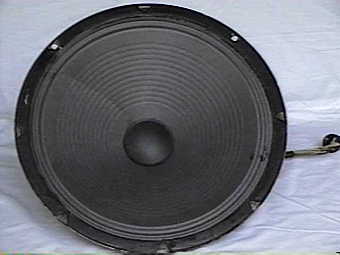
|
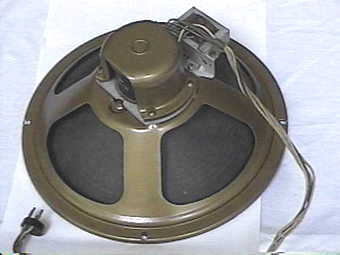
|
The next step was to tackle the chassis and replace all the capacitors. The filter capacitor was a cardboard tubular mounted under the chassis. The tube was opened and the old contents removed and new electrolytics were installed inside and sealed with hot glue. The contents were removed from all the paper bypass and coupling capacitors and new mylars installed inside the original containers. The photo below is a partial shot of the chassis showing the rebuilt capacitors.
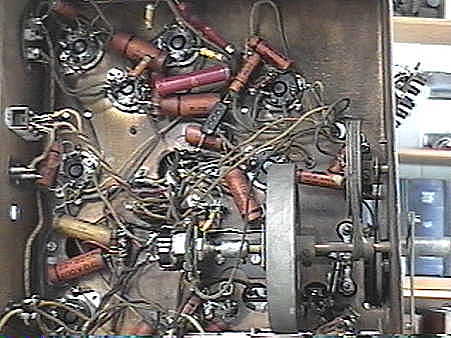
|
After capacitor replacement the set was plugged into the Variac and voltage was brought up slowly while monitoring the input current. All tubes lit up and with an antenna connected the set played. Voltages were checked and found to be within specifications. The 6U5 tuning eye showed no variation of the shadow when tuning stations so the 1 megohn resistor mounted inside the tube socket was suspect. The socket was opened and as expected, the resistor measured open. After replacing the resistor, the tuning eye worked but the display was weak so another 6U5 with a much brighter display was installed.
An alignment peaked up the sensitivity of the set quite a bit. The flip switches for the tone controls were installed and checked out. There are six different tone settings:
The tonal quality of the set is very good and combinations of these settings give a good range of adjustments to taylor the sound to one's liking.
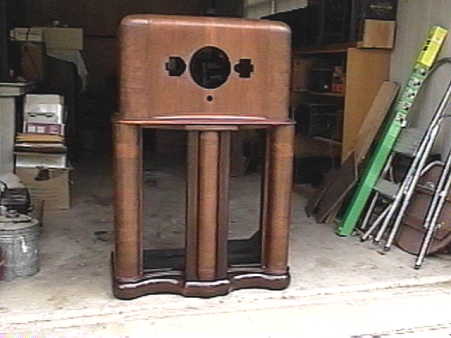
|
With the electrical restoration complete, attention was turned to the physical condition of the cabinet and chassis. The cabinet was given a good cleaning and then a rub down with a tack cloth. A combination of equal parts of lacquer thinner, denatured alcohol, and acetone was used to reflow the finish in places where it had become worn. The finish on the base was in such condition that it had to be completely stripped. Several coats of Dark Walnut toning lacquer were applied to the base to replace the dark finish, and also to the trim on either side of the center post. Next a couple of coats of Medium Dark Walnut toning lacquer were applied to the rest of the cabinet which covered any scratches, and any signs of where the original finish had worn. This was allowed to dry for a couple of days, then several coats of Clear Gloss Nitrocellulose lacquer were applied. After allowing this to harden , the finish was rubbed down with 0000 steel wool to dull the shine a bit.
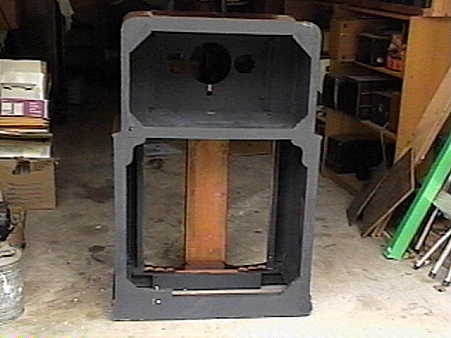
|
The inside of the cabinet was painted with a dark flat water-based latex paint. I had the paint store try to match a sample of the original color from the inside of the cabinet, however the inside was a stain and the color did not come out exact but does look good.
Next attention was given to cleaning up the chassis. The transformer covers were removed and repainted, then the chassis was masked off in preparation for painting. Zenith used a gold hammered finish on many of their chassis. I searched some time before I found a paint that was as close a match to the Zenith gold as could be expected. The paint is called Hammerite Hammered Finish Rust Cap, part # 41170 - Hammered Gold, made by Masterchem Industries, Inc., and comes in an aerosol can. My local hardware store recently started carrying it. The chassis and speaker frame were repainted and it would be very difficult to tell that it was not the original Zenith paint. Unfortunately the pictures do not show this as clearly as I would like.
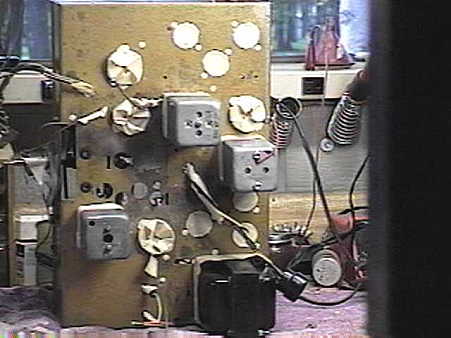
|
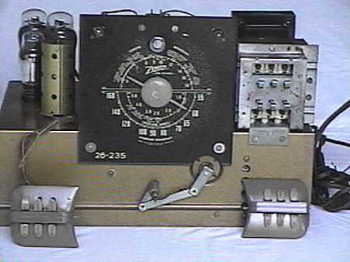
|
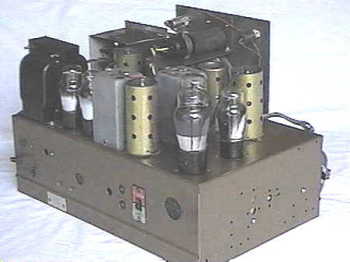
|
New grill cloth had to be installed as the previous owner had removed all of the original cloth. I particularly like the scalloped effect on the sides, but this did present a bit of a challenge in installing the new cloth. New reproduction knobs were installed as the original ones were badly warped and not usable. Fortunately none of the flip switches for selecting tone and push-button tuning were broken or missing. The dial escutcheon was cleaned using lacquer thinner and 0000 steel wool which left it a bright copper shine. It was given a coat of toning lacquer to get back the antique patina look.
The final results were quite satisfying and the set now occupies a prominent place in the radio room. Sitting here looking at the set I cannot help but wonder what entertainment and news it brought to some family some sixty plus years ago. Perhaps they heard the announcement of the bombing of Pearl Harbor that fateful day December 7 1941, and President Roosevelt's address the next day declaring war. Maybe a son went off to serve his country and the family anxiously listened to war bulletins hoping to know that he was not in harms way. Occasionaly Father would stay up a little late, scanning the short-wave bands to pick up the BBC for war news directly from overseas. I can imagine them listening with keen interest to the bulletins of the D-Day invasion praying that this would be the beginning of the end to war. I also see the younger children spread out on the floor in front of the console, staring at the glowing eye, as I used to do (I thought the people in the radio could see me through that "magic eye"), and listening to Jack Armstrong, The Adventures of Superman, The Shadow and other kiddie programs. Later after the evening meal, Mom and Dad would sit down and tune in their favorite shows, a diversion to take their minds briefly away from troubled times, and the jubilation they felt when the old Zenith announced that the war was over and knew their loved one would soon be returning home.
With a low power AM transmitter I too can listen to those same programs...some Glen Miller, The Shadow, McGee and Molly, Bergan and McCarthy, Jack Benny, and it is 1940 all over again...you just can't beat it!
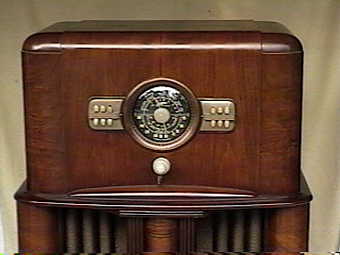
|
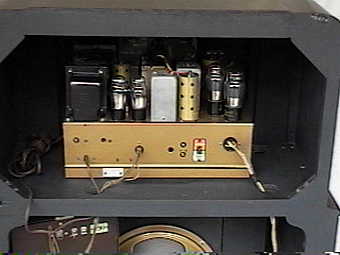
|
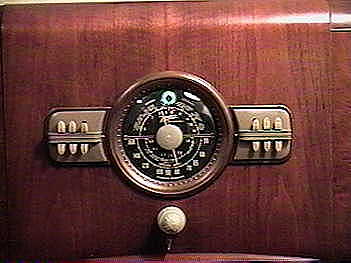
|
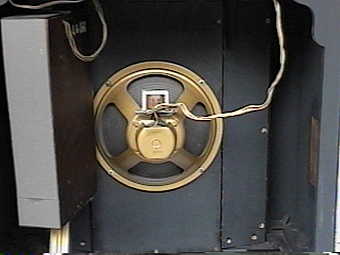
|
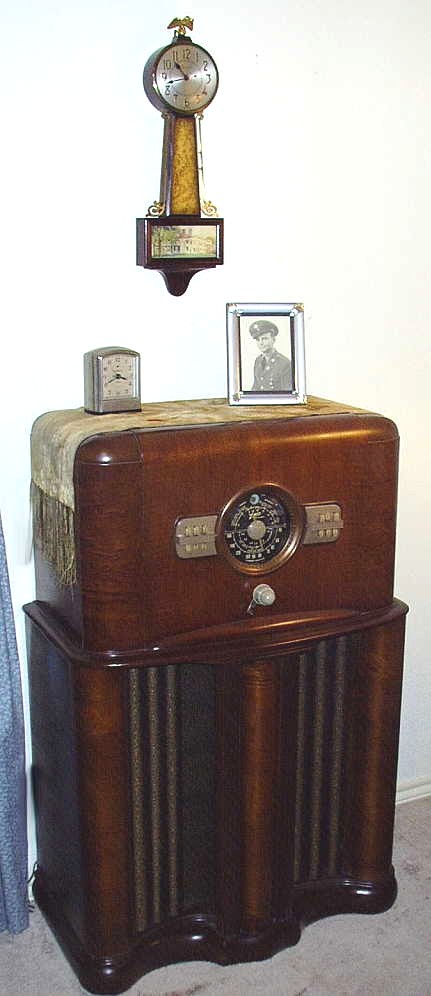
|
 |